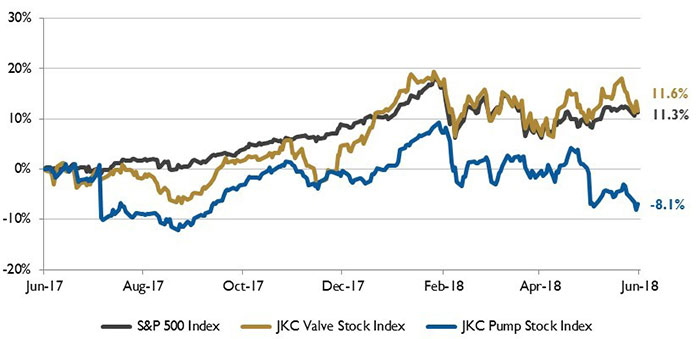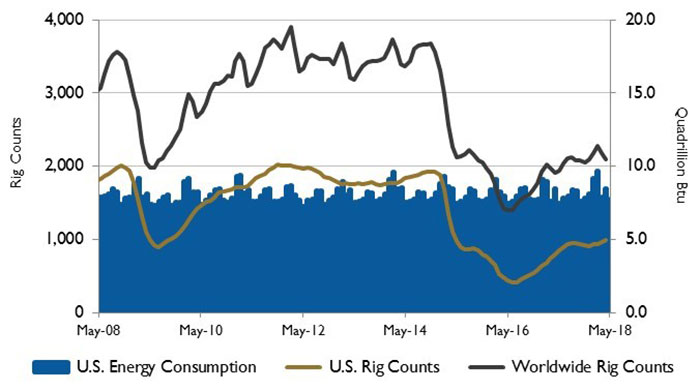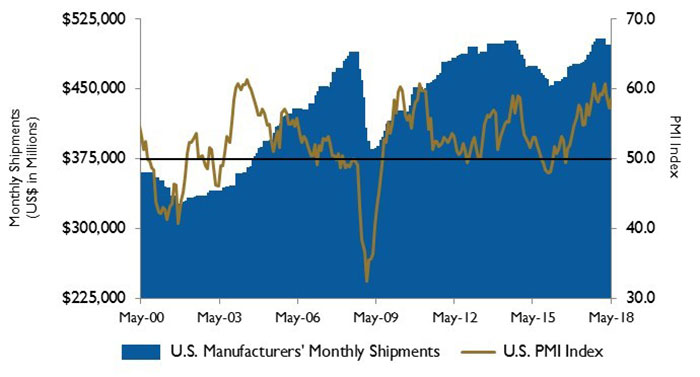The Jordan, Knauff & Company (JKC) Valve Stock Index was up 11.6 percent over the last 12 months, while the broader S&P 500 Index was up 11.3 percent. The JKC Pump Stock Index decreased 8.1 percent for the same time period.1 The Institute for Supply Management’s Purchasing Managers’ Index (PMI) increased from 57.3 percent in April to 58.7 percent in May. The New Orders Index registered 63.7 percent, an increase of 2.5 percentage points from the April reading. The Production Index registered 61.5 percent, a 4.3 percentage point increase. Demand remains strong, with the New Orders Index at 60 or above for the 13th straight month, and the Customers’ Inventories Index remaining at very low levels. The U.S. created 223,000 jobs in May. Most industries added jobs and worker pay increased at a somewhat faster pace. Retailers added 31,000 new jobs, health care added 29,000, construction added 25,000, and manufacturing increased by 18,000. The unemployment rate fell to an 18-year low of 3.8 percent.
 Image 1. Stock Indices from June 1, 2017 to May 31, 2018. Local currency converted to USD using historical spot rates. The JKC Pump and Valve Stock Indices include a select list of publicly traded companies involved in the pump and valve industries, weighted by market capitalization. Source: Capital IQ and JKC research.
Image 1. Stock Indices from June 1, 2017 to May 31, 2018. Local currency converted to USD using historical spot rates. The JKC Pump and Valve Stock Indices include a select list of publicly traded companies involved in the pump and valve industries, weighted by market capitalization. Source: Capital IQ and JKC research. Image 2. U.S. energy consumption and rig counts. Source: U.S. Energy Information Administration and Baker Hughes Inc.
Image 2. U.S. energy consumption and rig counts. Source: U.S. Energy Information Administration and Baker Hughes Inc. Image 3. U.S. PMI and manufacturing shipments. Source: Institute for Supply Management Manufacturing Report on Business and U.S. Census Bureau
Image 3. U.S. PMI and manufacturing shipments. Source: Institute for Supply Management Manufacturing Report on Business and U.S. Census Bureau
